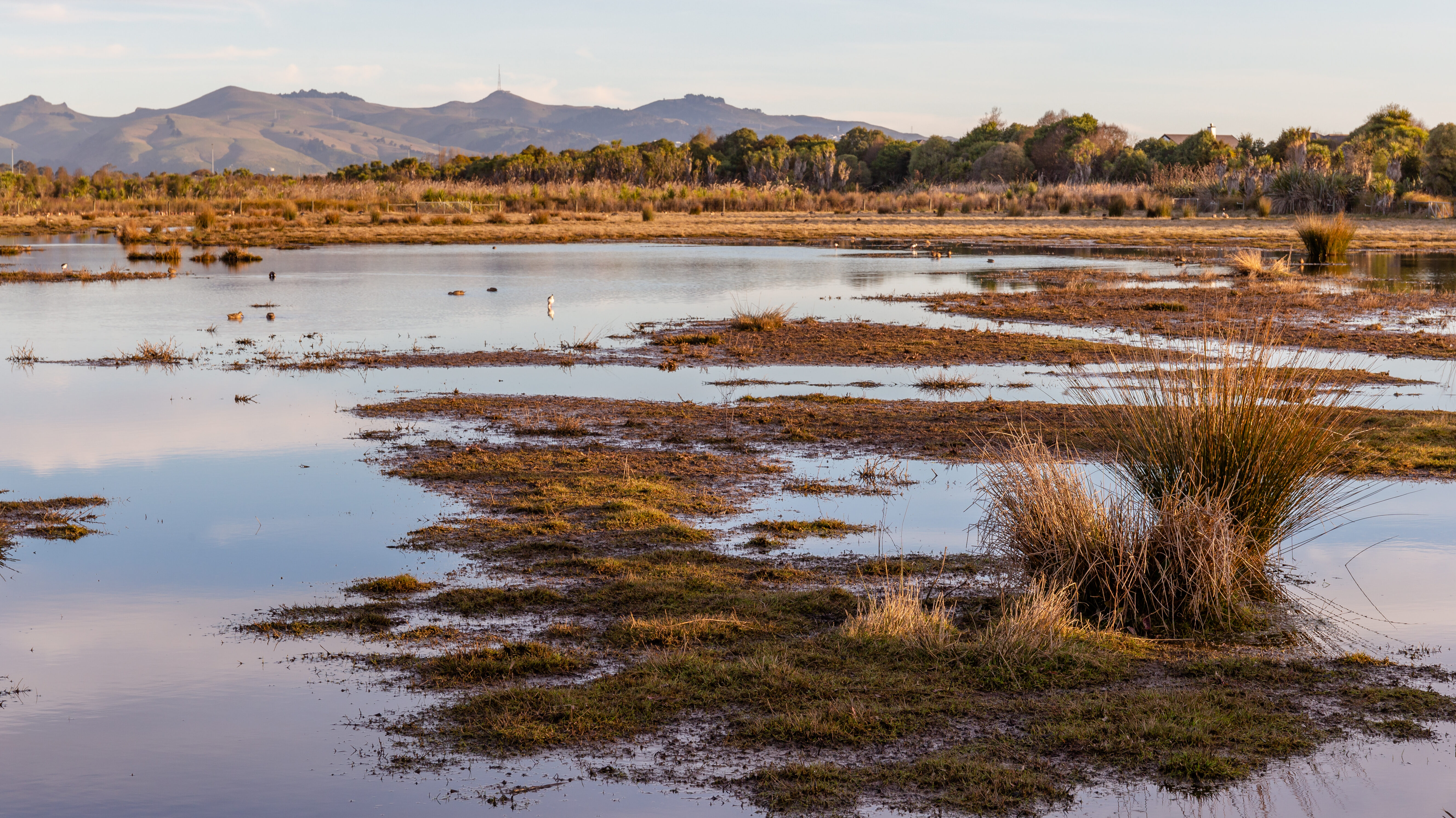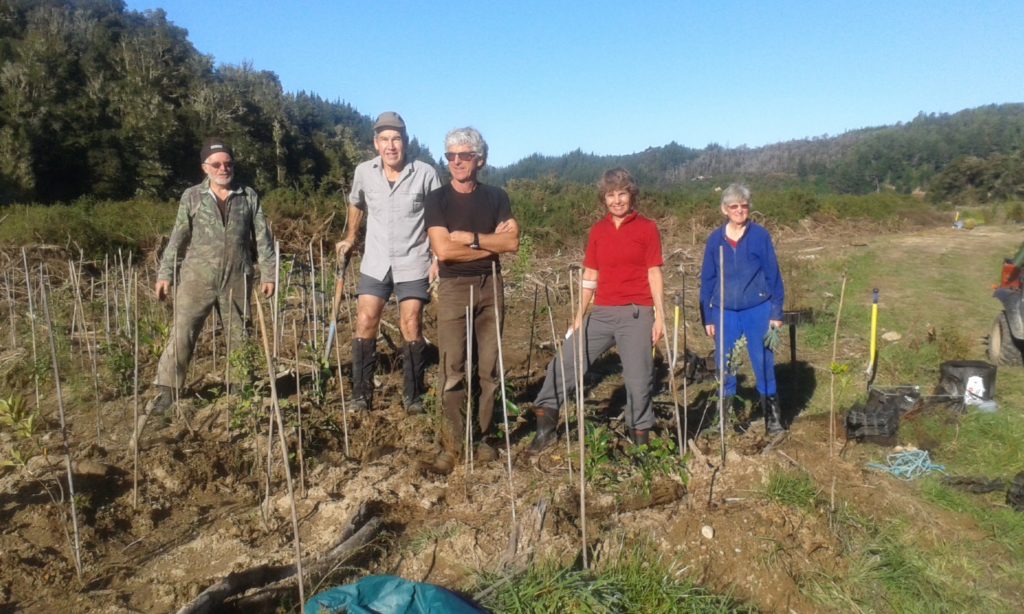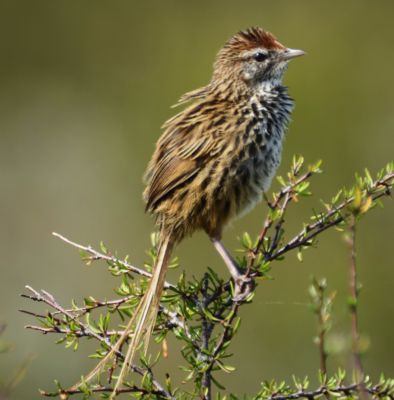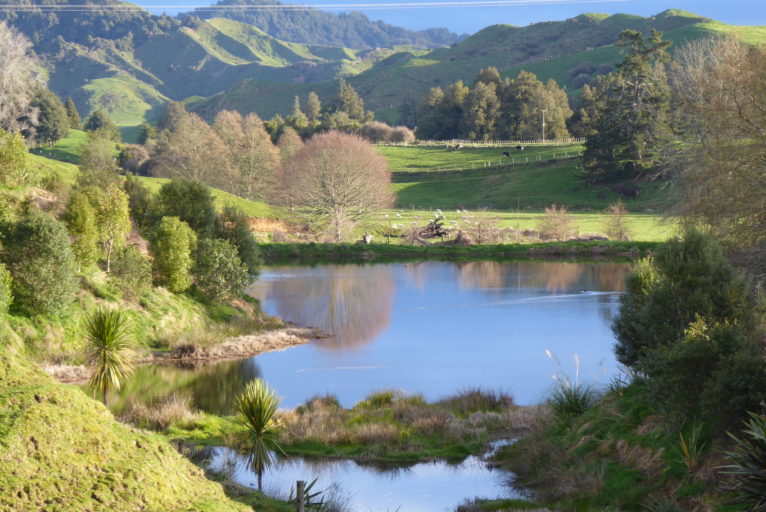Once we called them swamps and thought of these places – if we thought of them at all – as potential farmland and subdivisions, muddy, boggy and waiting to be drained. Nowadays they’re ‘wetlands’ and its not just the labelling that’s changed. Our attitudes are slowly changing too.

We’re beginning to understand the value – the ‘ecosystem services’ – that wetlands provide when they’re allowed to remain just the way they are. What’s more, former swamps that were once drained are now being restored and allowed to form wetlands again.
So what are the benefits that wetland restoration brings?
Stephanie Tomscha et al from Victoria University of Wellington used several assessment methods to better understand the effects of wetland restoration on ecosystem services. The study has just been published in the research journal Ecosystems and People.
“This study was conducted in the Wairarapa region, the southern part of the North Island. The Wairarapa is bounded by the Remutaka mountain range and the Pacific Coast. The 5938 square kilometre region is home to approximately 45,000 inhabitants, including Māori iwi (tribes) Ngāti Kahungunu ki Wairarapa and Rangitane o Wairarapa.”

“This study was conducted in the Wairarapa region, the southern part of the North Island. The Wairarapa is bounded by the Remutaka mountain range and the Pacific Coast. The 5938 square kilometre region is home to approximately 45,000 inhabitants, including Māori iwi (tribes) Ngāti Kahungunu ki Wairarapa and Rangitane o Wairarapa.”
Land use includes dairy and beef cattle and sheep farming, viticulture, forestry and conservation and wetland has hugely declined over time, say the authors.
“Wetland area in the Wairarapa has declined 98.7% from its precolonial extent, exceeding global loss averages of 71% and the New Zealand loss average of 90%. Of the existing wetlands, 75% are located on private property, and the majority do not exceed 3 hectares. Influxes of phosphorus and nitrogen have led to eutrophication of waterbodies, including Lake Wairarapa, the largest lake in the region, which is now classified as supertrophic.”
The good news is that local landholders, farmers, iwi and community groups are restoring wetlands on private and public property, often with the goal of improving water quality. Wetland benefits are finally being valued.
“Momentum for wetland restoration is growing, in part, because the consequences of wetland loss for ecosystem services are increasingly apparent. Since 1900, global estimates of wetland drainage range from 64% to 71%. This drainage has resulted in losses of many ecosystem services, the benefits people gain from ecosystems, usually in exchange for agricultural productivity.”
A wetland doesn’t have to be huge to make a big difference.
“Relative to their area, wetlands are disproportionately important for ecosystem services. Wetlands store carbon, trap sediment and retain excess nutrients (thus promoting better freshwater quality), and attenuate floods.”
Providing evidence of the contribution wetlands make can be a challenge, however, according to the authors.
“The restoration research community has long grappled with how to define and measure wetland restoration success. Approaches have included measuring species diversity, vegetation structure and ecological processes. Although frameworks are developing, no globally applicable methods exist to assess wetland ecosystem services via modelling and/or field measurement.”
So why does it matter? Well, tracking restoration gains may encourage more landowners to participate in wetland restoration if they can see proven benefits.

“Additionally, systematic assessment of progress could enable restoration policy to be target towards landscape contexts providing the most favourable outcomes. Finally, evidence of gains in ecosystem services may inspire more government, industry and philanthropic support for what might otherwise be perceived as a costly endeavour.”
So how can those benefits be measured?
“Field-measured indicators are key for estimates of service gains from restoration projects, and a range of biophysical indicators have been developed to facilitate field measurements. For example, soil organic carbon is an indicator of soil carbon storage, while saturated hydraulic conductivity is an indicator of flood mitigation. Multiple methods, including social science, can complement field measurements to capture the range of ecosystem services gained through restoration. Interviews and surveys may be particularly useful for asking about temporally dynamic process in difficult to access sites. For example, asking people how often and where they hunt is more feasible than waiting for observations of hunters on private land.”
Even just identifying wetlands can be challenging.
“Another challenge in studying restored wetlands is identifying their locations. For example, in New Zealand, no centralized database or maps of restored wetlands exist, partly because many wetlands are located on private land, where management decisions are considered confidential. Furthermore, wetlands are often small and therefore difficult to map.”
The mapping options can be expensive.
“Consequently, costly high resolution, multispectral imagery is often required to adequately map wetlands. High-resolution data also facilitate the detection of soil moisture Even when wetlands can be detected, distinguishing restored versus intact wetlands may not be feasible if their spectral signatures are indistinguishable. In addition, land-use history and some restoration treatments, such as predator control and fencing, are not visible in satellite imagery.”
So why not ask the locals?
“One solution to the problem of locating restored wetlands is participatory mapping; where researchers ask local people to identify restored wetlands and describe associated management activities. This approach is easily paired with surveys and interviews to capture the intangible ecosystem services from wetland restoration.”
Mathematical modelling can then be used as one assessment tool.

“Modelling changes in ecosystem services due to small, restored wetlands is challenging. The Land Use Capability Indicator (LUCI), an extension of Polyscape, is one of the few tools that models multiple ecosystem service indicators at high spatial resolutions. Nutrient exports from upstream areas may change the magnitude of nutrient retention provided by a restored wetland. Thus, a spatially explicit model that accounts for upstream contributing areas, such as LUCI, is critical for accurate estimates of ecosystem service delivery.”
Mathematical modelling was just one of several tools used by the authors in their wetland assessments.
“Here, we use a blend of in-person surveys, geospatial modelling, field measurements and participatory mapping to identify changes in ecosystem services through wetland restoration. Drawing on the strengths of each approach, we ask three main questions:
- What ecosystem services do people perceive from restored wetlands?
- What modelled/ measured ecosystem services were enhanced through restoration?
- How do field measured, modelled and perceived ecosystem services in restored wetlands interact?
“Using multiple methods to estimate ecosystem service gains from restoration, we create a more comprehensive picture of the social-ecological system that responds to wetland restoration.”
The first step was to conduct a participatory mapping and survey exercise with private landholders who had restored a wetland on their property, including questions about their use and values for their restored wetland.
“The resulting maps of restored wetlands were then used to calculate the upstream contributing area for each wetland. Next, we used LUCI to estimate changes in ecosystem services resulting from restoration. Finally, we conducted field surveys of plant diversity and characterised soil properties in restored wetlands, and adjacent unrestored land, to estimate differences in ecosystem services achieved through restoration.”
The results highlighted a number of benefits/ecosystem services from wetlands.
“Landholders perceived approximately 6.5 services from their restored wetlands. For modelled services, restoration significantly enhanced nitrogen and phosphorous retention. For field-measured services, restoration increased soil organic carbon by ~20%, soil permeability to water by ~27% and native plant species richness by ~15 species, while reducing plant available phosphorous by ~23%.”
“Correlating across methods revealed that reduced plant available phosphorus and site age and size were associated with more perceived services, whereas an increase in plant species richness was not a good proxy for gains in measured, modelled or perceived services. Based on the diverse ecosystem services gained, demonstrated by multiple methods, we contend that private wetland restoration can be successful as well as leveraged to meet multiple management and policy objectives.”

Using multiple methods, the researchers quantified both the scope and magnitude of ecosystem service gains, providing a holistic perspective of restoration outcomes.
“Although the median size of the restored wetlands was only 2.5 ha, all restored wetlands increased overall biodiversity or ecosystem services, which shows promise for landholders interested in small restoration projects. Nonetheless, as restored wetland size and their upstream areas increased, landholders identified a higher number of perceived services. These associations suggest that landholders who perceive more wetland services are inspired to restore larger wetlands.”
Landowners involved in wetland restoration shared broadly common perceptions of ecosystem benefits.
“The most commonly perceived ecosystem service was biodiversity (17/18 landholders) followed by aesthetics (15/18 landholders). The perception of wetlands as beautiful signals landholder opinions of wetlands have shifted, as historically, many farmers perceived wetlands as unattractive wastelands.”
Potential cultural benefits weren’t recognised by survey participants, however.
“In contrast, no landholders perceived gathering fibres as a service from their wetlands, suggesting privately restored wetlands are not providing this service. In New Zealand, harakeke (Phormium tenax) is a wetland plant traditionally used by Māori for weaving. People who would gather these fibres may not have access to these privately held wetlands, which underscores that public restoration projects are still key for maintaining this important cultural resource.”
Restored wetlands could also make a contribution to reducing greenhouse gases and mitigating future flooding.
“Soils from restored wetlands may be leveraged to mitigate greenhouse gasses. In New Zealand, only afforestation has been recognised under the emissions trading scheme. Consequently, landholders are not credited for the carbon gains in restored wetland soils. Concurrently, we demonstrated that by restoring wetlands, nitrogen and phosphorus are less likely to leach into nearby lakes and streams, resulting in improved water quality downstream. Finally, we add to evidence that wetland restoration increased soil permeability, and thus, the capacity to abate floods, indicating that wetland restoration may provide a promising alternative to engineered flood protection.”
So maybe its time to dump the ‘muddy swamp’ image completely and embrace the multiple benefits offered by restored wetlands – before more wetlands are lost from our landscape.
“Taken together, wetland restoration may reduce land atmosphere carbon emissions, improve freshwater quality and provide a promising and cost-effective alternative to engineered solutions for flooding mitigation. Despite the solutions wetlands can provide, current policies overlook wetland restoration as a key tool. Elevating the role of wetlands in policy is especially urgent as the current scale of wetland restoration does not match the magnitude of their continued loss in New Zealand.”
“Using multiple methods allowed us to capture a wide range of ecosystem services and how they interacted, providing comprehensive and quantitative estimates of the gains received when wetlands are restored on private lands. The overwhelming evidence of significant gains in multiple ecosystem services from wetland restoration upholds a need for continued restoration efforts. Harnessing the potential of wetland restoration may be key for meeting a range of policy objectives in New Zealand and globally.”
The full research report is published in Ecosystems and People and is freely available online.
Multiple methods confirm wetland restoration improves ecosystem services (2021)

